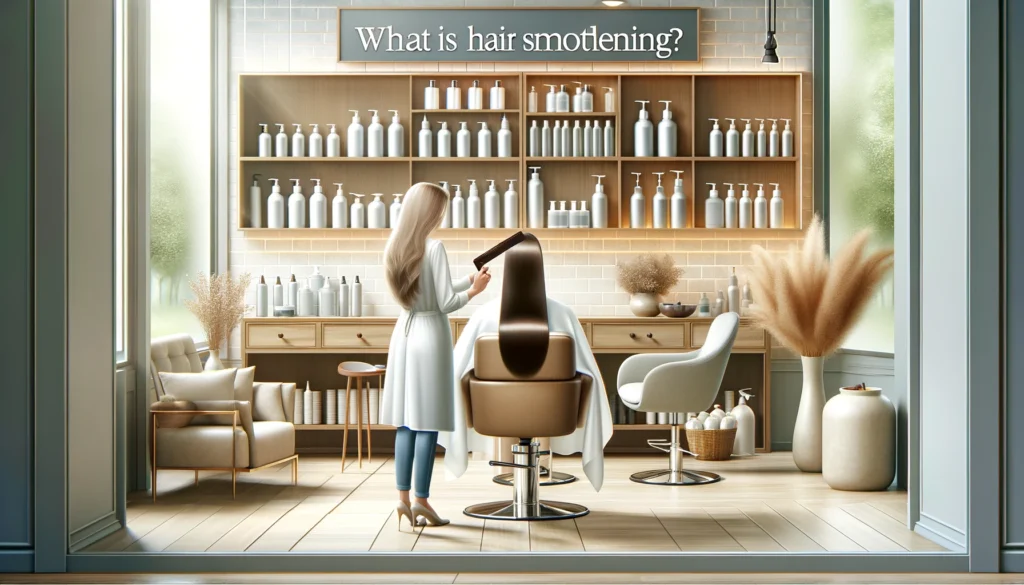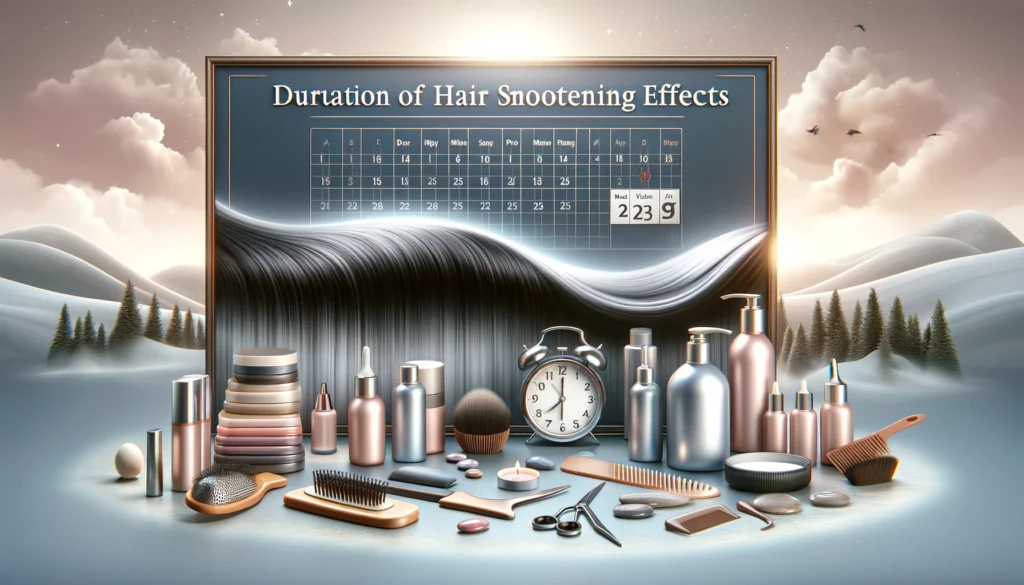Hair smoothening has emerged as a popular haircare treatment, offering a semi-permanent solution to frizz and unruliness. By utilizing chemicals that temporarily break down hair bonds, this procedure leaves the hair looking silky, smooth, and manageable. However, one of the most common queries regarding this treatment is its durability.
In this article, we dive deep into understanding how long hair smoothening lasts, factors that influence its longevity, and how to extend its lifespan.
Table of Contents
Understanding Hair Smoothening
What is Hair Smoothening?
Hair smoothening is a chemical process that smoothens and shines the hair by temporarily altering its structure. Often confused with straightening, this method involves breaking the hair’s bonds through a Brazilian blowout or keratin treatment.
Unlike more damaging options, smoothening offers a gentler transformation, achieving a sleek look without harsh consequences. It’s pivotal to note, however, that this allure is temporary, requiring upkeep to maintain its smooth appearance.

How Does It Work?
Hair smoothening is a treatment that involves the applying of a formaldehyde solution to the hair, followed by drying and flat-ironing to lock in a smooth texture. This process uses chemicals to coat each strand, diminishing frizz and enhancing shine. It’s a popular method for those looking to tame unruly locks and achieve a sleek, glossy appearance without permanently altering hair structure.
Duration of Hair Smoothening Effects
General Longevity
Typically, the effects of hair smoothening last between 2 to 6 months. The wide range in duration can be attributed to several factors, including the hair’s original texture, the type of chemicals used, and post-treatment care.
Factors Affecting Longevity
- Hair Type: Coarse, curly hair may see shorter-lasting results compared to fine, wavy hair.
- Chemical Formula: Some treatments use stronger chemicals that may extend the duration of the smoothening effect.
- Hair Growth: As new hair grows, the roots will display the natural hair texture, affecting the overall look.

Maximizing the Lifespan of Hair Smoothening
Post-Treatment Care
- Sulfate-Free Shampoo: Using a sulfate-free shampoo can prevent the stripping of treatment chemicals from your hair.
- Avoid Salt Water and Chlorine: Exposure to salt water and chlorine can shorten the life of your smoothening treatment.
- Minimize Heat Styling: High temperatures can break down the chemicals faster, reducing the treatment’s effectiveness.
Regular Maintenance
- Touch-Up Treatments: Scheduling regular touch-up treatments can help maintain the smooth texture, especially at the hair roots.
- Deep Conditioning: Regular deep conditioning treatments can help sustain the hair’s health, shine, and smoothness.
Lifestyle Adjustments
- Reduced Washing Frequency: Limiting hair washing to two or three times a week can preserve the treatment longer.
- Protective Hairstyles: Opting for protective hairstyles can reduce exposure to elements that might degrade the smoothening treatment.
Check similiar article: Does the Sun Help Your Hair Grow?
Frequently asked Questions
What is hair smoothening?
Hair smoothening is a chemical treatment aimed at reducing frizz and enhancing the smoothness of hair. It works by applying a formaldehyde-based solution to the hair, which is then sealed in with heat to create a sleek appearance.
How long does hair smoothening last?
Typically, hair smoothening lasts between 2 to 6 months. The exact duration depends on your hair type, the care routine you follow, and environmental factors.
Is hair smoothening better than hair straightening?
Whether hair smoothening is better than straightening depends on your desired outcome. Smoothening offers a more natural look with less damage to the hair, while straightening provides a permanently flat and sleek appearance but can be more damaging.
Can I wash my hair immediately after smoothening?
It’s recommended to wait at least 72 hours before washing your hair after a smoothening treatment to allow the solution to fully set.
What shampoos should I use after hair smoothening?
Opt for sulfate-free and sodium chloride-free shampoos. These ingredients can strip the treatment from your hair, reducing its longevity.
Can hair smoothening damage my hair?
When done correctly and not too frequently, hair smoothening is relatively safe. However, overuse or improper application can lead to hair damage.
How often can I undergo hair smoothening treatments?
It’s advisable to wait at least 4 to 6 months between treatments to minimize potential damage to the hair.
Will my hair return to its original texture after the smoothening wears off?
Yes, your hair will gradually return to its original texture as the smoothening effect wears off and new hair grows.
Can I color my hair after smoothening?
It’s best to color your hair either two weeks before or two weeks after the smoothening treatment to avoid any adverse reactions between the chemicals.
How do I maintain my smoothened hair?
To maintain your smoothened hair, use the recommended shampoos and conditioners, avoid salt water and chlorine, minimize heat styling, and follow a regular deep-conditioning routine.
Conclusion
The transformative solution of hair smoothening offers individuals a path to frizz-free and manageable hair. While this treatment isn’t permanent, with proper care and maintenance, one can significantly prolong the effects. A smooth, sleek appearance can be maintained for up to several months, depending on the key steps taken towards maximizing the lifespan of the hair smoothening treatment.
An effective aftercare regimen, encompassing informed choices about products and techniques, is crucial for hair health and longevity. By adhering to these guidelines, individuals can enjoy the lasting benefits of their treatment, ensuring their hair remains as intended for as long as possible.
